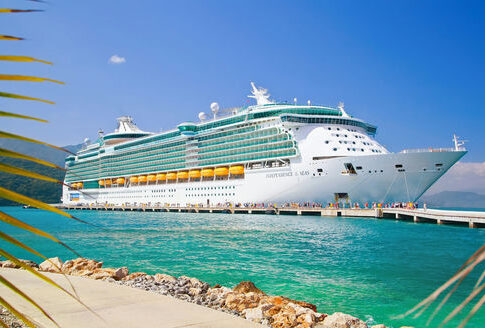A luxury cruise vacation turned into a nightmare when a mysterious illness struck numerous passengers, revealing deeper geopolitical tensions lurking beneath the surface.
At a Glance
- Numerous passengers on a luxury cruise fell ill from an unidentified sickness.
- The incident coincided with heightened military activities in the Taiwan Strait.
- China’s increasing military presence poses risks to regional stability.
- International naval movements highlight global stakes in Taiwan’s security.
Cruise Vacation Turns into a Nightmare
What was meant to be a luxurious retreat on the open seas quickly descended into chaos as passengers began exhibiting symptoms of a mysterious illness. The cruise, which concluded on July 11, was overshadowed by a health crisis that left vacationers and crew members alike in distress. Passengers reported symptoms ranging from mild discomfort to severe ailments, with medical staff scrambling to identify and contain the sickness. The unexpected development transformed the ship into a floating quarantine zone, with anxiety levels soaring alongside uncertainty about the illness’s origins and implications.
The cruise’s unforeseen health emergency unfolded against a backdrop of significant geopolitical tension. As alarms sounded onboard, the waters surrounding the vessel were teeming with military activity, particularly in the volatile Taiwan Strait. The juxtaposition of personal and political turmoil created a perfect storm of uncertainty, raising questions about the interconnectedness of health and security issues in today’s complex global environment.
Escalating Tensions in the Taiwan Strait
While cruise passengers grappled with their health crisis, the nearby Taiwan Strait was witnessing a dramatic escalation of military maneuvers. In late June and early July, China ramped up its military presence, with numerous aircraft crossing into Taiwan’s air defense identification zone. The situation intensified on July 1 when a Chinese amphibious ship was detected off Taiwan’s northern coast—a significant development in China’s ongoing maritime posturing.
These incursions came amidst Taiwan’s largest-ever military drills, designed to enhance combat readiness in response to perceived threats from the mainland. The combination of military muscle-flexing and strategic exercises underscored the fragile balance of power in the region, as Taiwan sought to assert its sovereignty while China demonstrated its resolve to enforce its territorial claims.
International Stakes and Reactions
The unfolding crisis in the Taiwan Strait attracted the attention of international actors, with the United Kingdom making a bold statement by sending the HMS Spey through the contested waters. This move drew sharp condemnation from Beijing, which viewed it as a provocation, while Taiwan welcomed it as a sign of international support. The United States and its allies remain key players in the strategic chess game, providing diplomatic and, at times, military backing to Taiwan in the face of Chinese aggression.
The interplay of military posturing and diplomatic maneuvering highlighted the global stakes involved in Taiwan’s security. The Taiwan Strait is not just a regional flashpoint but a critical artery for global trade and a symbol of the broader Indo-Pacific strategic competition. As such, developments in this area have far-reaching implications for international peace and stability, with the potential for rapid escalation into conflict.
The Broader Implications
The twin crises of the cruise illness and Taiwan Strait tensions serve as stark reminders of the interconnectedness of modern challenges. The health scare underscores the vulnerability of global travel and the potential for rapid disease spread, while the geopolitical developments highlight the persistent threat of conflict in strategically sensitive regions.
For the Taiwanese population, the increased military activity brings an ever-present sense of insecurity, compounded by the specter of potential conflict. Neighboring countries and global shipping routes also face heightened risks, with the potential for economic disruption should tensions escalate further. In this context, the cruise’s ill-fated journey serves as a microcosm of the broader uncertainties facing the world today.

